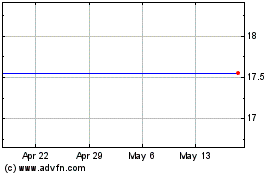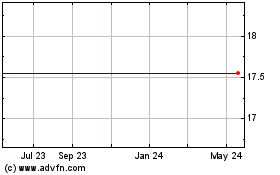Robust Dealmaking and Investment, Increased
Pipeline Safety and Grid Security
TRC Companies Inc. (NYSE: TRR), a recognized leader in
engineering, environmental consulting and construction-management
services, today released its top 12 predictions for the energy,
utility, and oil and gas sectors for 2017, including robust funding
for utility mergers and acquisitions and infrastructure upgrades as
well as big shifts in power plant and pipeline construction
focus.
TRC CEO Chris Vincze said: “Even as oil and gas prices fluctuate
and regulatory policies evolve, we see market drivers remaining
very strong for investment in energy system upgrades and
environmental and infrastructure work for the ongoing expansion of
renewables. Our country has a tremendous need to update antiquated
and deficient infrastructure, and that combined with available
capital means investment will remain robust in 2017 for everything
from renewable power and energy efficiency to utility consolidation
and upgrading distribution systems.’’
With national emissions and climate-change regulations likely to
change significantly under the new president and Congress, TRC’s
energy/utility/oil and gas predictions for 2017 include:
1 Robust power-generation deal making and
M&A activity. Private equity funds have billions of dollars
looking for returns, and slow load growth has investor-owned
utilities interested in expanding both geographically and from
electricity into gas and vice versa. “Interest will remain high in
deals for gas-fired generation, wind and solar projects, and even
existing coal-fired generation when the price and potential returns
are right,’’ said Mark Hall, TRC vice president of power
development.
2 Pipeline construction and maintenance
focus shifts. Given current oil and gas supplies and prices,
expect pipeline construction activity in the U.S. in 2017 to focus
much more on optimization than unbridled expansion: 30-, 40-, and
50-mile projects in various areas to improve the efficiency of
delivery networks or meet the needs of specific end-use customers
(“demand pull”), not proposals for 300-, 400-, and 500-mile
projects to open major new supply flows. Two exceptions: We
anticipate a big push to increase gas pipeline capacity from the
U.S. Southwest to and through Mexico as the country continues to
replace oil-burning electric generating stations with units fired
by U.S.-exported gas. Also, with the new White House
administration, the Keystone XL pipeline will likely be back on the
table. Finally, 2016 incidents will drive stricter regulations
(like the U.S. Department of Transportation Pipeline and Hazardous
Materials Safety Administration “Mega Rule”) and more aggressive
inspection regimes by pipeline operators in 2017.
3 For pipeline developers, new rules for
public engagement. As dramatized by the protests over the
Dakota Access Pipeline Project and environmentalist backlash
against pipeline projects generally, we anticipate more proactive
public outreach and engagement during the pipeline development
process, along with greater adoption of pipeline routing
optimization technology to identify the least controversial, most
buildable pipeline routes. “Regulatory agencies are under more
scrutiny and litigation pressure, so pipeline developers and their
technical consultants will have to back up routing optimization
with smarter, more proactive communication and education efforts to
win public and regulatory support to get projects built,’’ said
Scott Reed, TRC vice president of oil and gas.
4 States are the drivers for efficiency
and renewables. With the new administration in Washington
taking energy policy in a new direction, look for most momentum for
green energy/energy efficiency/demand response policy change to
come from states like California, New York, Massachusetts, and New
Jersey in 2017.
5 Microgrids go social, buildings go
all-electric. As the transition to an advanced energy system
accelerates, we expect to see growing numbers of end users team up
in community microgrids that combine multiple, diverse customers –
municipal, commercial, residential, and institutional – as unified
“islands” of electric load to improve overall reliability, increase
the impact of shared energy and efficiency sources, and reduce
energy costs. “Another emerging energy trend in 2017 is with
technology maturing and costs declining, more developers of
high-performance and zero-net-energy buildings will consider making
them all-electric, using solar PV as a major energy source,
evaluating integrating energy storage and using heat pumps to
replace fossil fuels for heating needs,’’said Carmen
Hendrickson, Associate Vice President, TRC Energy Services.
6 Some regional gas generation
plateaus. With gigawatts of new gas-fired generation under
construction and development in markets including Pennsylvania,
Ohio, and Texas, look for proposals for new gas generation in the
PJM and ERCOT grids to taper down by the end of 2017. As this wave
of new capacity there taking advantage of abundant shale gas comes
on line, installed generation is approaching economic
oversaturation.
7 More program partners for utility
upgrades. In the year ahead, more utilities will recognize they
need to turn to a program partner to manage massive
upgrade/modernization programs, including replacement of aging
infrastructure, compliance with regulatory and emissions mandates,
and securing the grid against terrorism and sabotage. The top 15
utilities face $30 billion worth of necessary upgrades, well beyond
their in-house capabilities to manage. Partnerships with entities
that have deep program management experience will be critical.
8 On the grid, communication is key.
Next year will see significantly increased investment in
communications capabilities on the grid, at both the system and
substation level, to enable more kinds of electrical equipment to
report problems and communicate with other devices to address
heightened concerns about grid vulnerability to terrorism and
sabotage. Expertise in managing the integration of these devices
and technologies into electrical facility design will become more
important than ever in 2017.
9 Decommissioned generator site
redevelopment. As more communities see former power plant sites
successfully redeveloped into industrial, commercial, retail,
maritime and recreational facilities, interest will grow in 2017 in
reforms –- like what’s now under way in Pennsylvania –- to define
and cap the environmental legal liability for successor plant site
owners for contamination related to past generation activity.
10 Coal ash cleanups. As the EPA’s
final rule on “management of coal combustion residuals from
electric utilities” has taken effect, lawsuits challenging
utilities on their self-certification plans to secure and close
coal ash ponds and other disposal facilities have increased. We
expect to see a growing chorus in 2017 calling for more uniform and
predictable federal and state regulations that can lead to faster,
more successful and cost-effective closures without the
uncertainty, expense, and delay of litigation.
11 Forecasting the price of oil will
remain an uncertain science: The anticipated production cuts by
OPEC and Russia in late 2016 will have a small but positive impact
on oil prices. Domestically, U.S. crude oil will likely remain
close to $50 per barrel in 2017, barring major geopolitical events
that traditionally have caused significant price volatility
12 Energy storage. Many electric
utilities will ramp up work in 2017 with microgrids and battery
storage. But the major factor limiting widespread adoption will be
whether and when utilities can get regulators’ approval for
ratepayer-funded investments in the technology. “Energy storage
raises so many questions for rate design, cost-shifting, impacts on
generators, integration with grid operations, and technical
compatibility issues that we do not see 2017 being the year of
widespread utility-scale adoption, although we do foresee continued
pilot storage projects to gain operational experience,’’ said
Steve Persutti, TRC vice president of utility development.
TRC and its over 4,000 employees in 120 U.S. and U.K. offices
are excited about what promises to be a busy, innovative year for
the utility, generation, and oil and gas sectors. Vincze said, “TRC
enters 2017 with strong capabilities to deliver solutions for
clients throughout the power and oil and gas markets, and we’re
continuing to invest in strategic hiring, evolve our service
offerings, and identify acquisition opportunities that enhance our
technical capabilities and geographical footprint.’’
About TRCA pioneer in groundbreaking scientific and
engineering developments since the 1960s, TRC is a national
engineering, environmental consulting and construction management
firm that provides integrated services to the power, environmental,
infrastructure and oil and gas markets. TRC serves a broad range of
commercial, industrial and government clients, implementing complex
projects from initial concept to delivery and operation. TRC
delivers results that enable clients to achieve success in a
complex and changing world. TRC trades on the NYSE under the symbol
TRR. For more information, visit TRC's website
at www.TRCsolutions.com, follow us on Twitter @TRC_Companies
or find us on LinkedIn.
Forward-Looking Statements
Certain statements in this press release may be forward-looking
statements within the meaning of Section 27A of the Securities Act
of 1933 and Section 21E of the Securities Exchange Act of 1934. You
can identify these statements by forward-looking words such as
"may," "expects," "plans," "anticipates," "believes," "estimates,"
or other words of similar import. You should consider statements
that contain these words carefully because they discuss TRC's
future expectations, contain projections of the Company's future
results of operations or of its financial condition, or state other
"forward-looking" information. TRC believes that it is important to
communicate its future expectations to its investors. However,
there may be events in the future that the Company is not able to
accurately predict or control and that may cause its actual results
to differ materially from the expectations described in its
forward-looking statements. Investors are cautioned that all
forward-looking statements involve risks and uncertainties, and
actual results may differ materially from those discussed as a
result of various factors, including, but not limited to, the
uncertainty of TRC's operational and growth strategies;
circumstances which could create large cash outflows, such as
contract losses, litigation, uncollectible receivables and income
tax assessments; regulatory uncertainty; the availability of
funding for government projects; the level of demand for TRC's
services; product acceptance; industry-wide competitive factors;
the ability to continue to attract and retain highly skilled and
qualified personnel; the availability and adequacy of insurance;
and general political or economic conditions. Furthermore, market
trends are subject to changes, which could adversely affect future
results. See the risk factors and additional discussion in TRC's
Annual Report on Form 10-K for the fiscal year ended June 30, 2015,
and other factors included from time to time in the Company's other
subsequent filings with the Securities and Exchange Commission.
View source
version on businesswire.com: http://www.businesswire.com/news/home/20161212005195/en/
TRC Companies Inc.Company Contact:Nicole Collins,
978-656-3594NCollins@trcsolutions.comorInvestor
Contact:Sharon Merrill Associates,
617-542-5300trr@investorrelations.com
T R C (NYSE:TRR)
Historical Stock Chart
From Oct 2024 to Nov 2024

T R C (NYSE:TRR)
Historical Stock Chart
From Nov 2023 to Nov 2024
